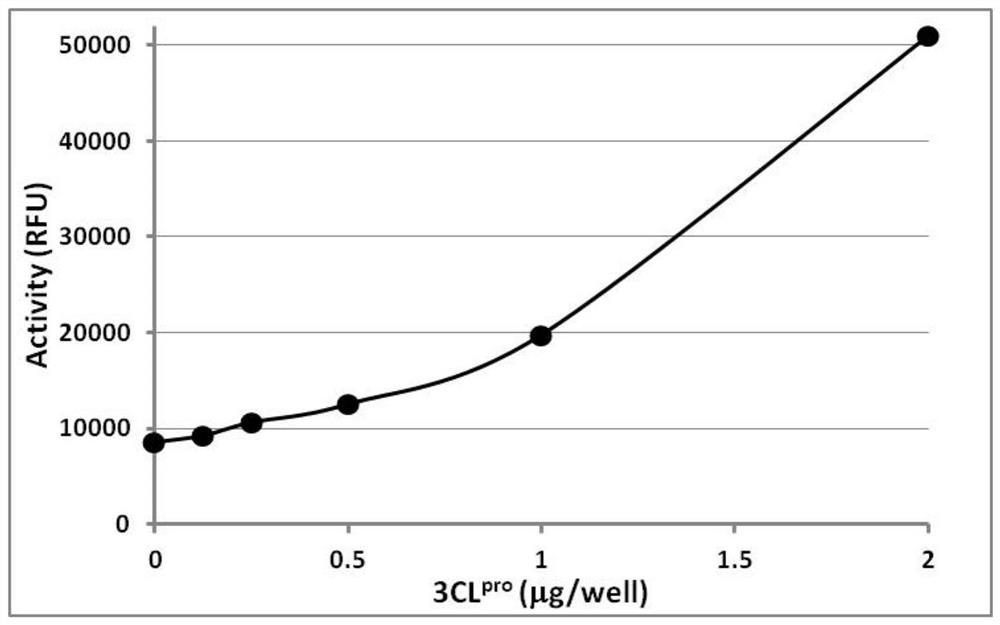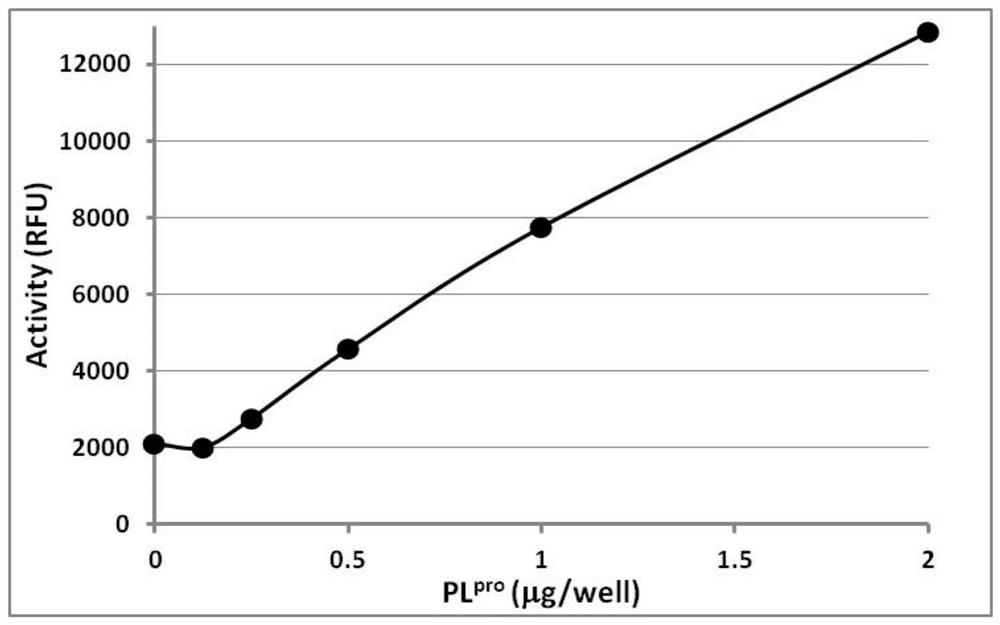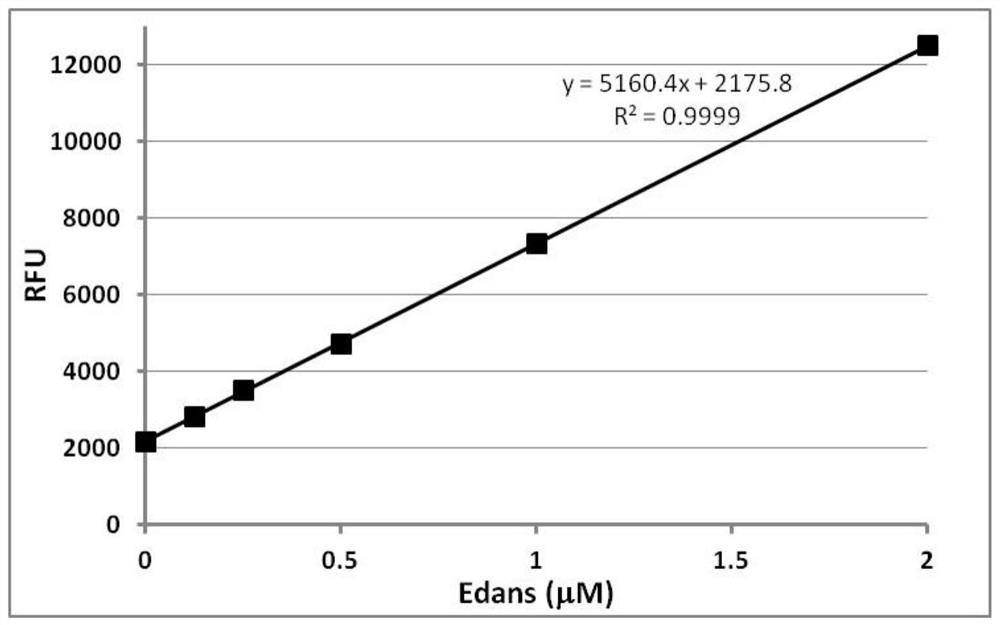Coronavirus protease activity measurement method based on fluorescence resonance energy transfer
A fluorescence resonance energy and coronavirus technology, which is applied in the field of enzyme activity detection, can solve the problem that the substrate cannot be cut, and achieve the effect of improving enzyme reaction efficiency, less workload, and low detection limit
- Summary
- Abstract
- Description
- Claims
- Application Information
AI Technical Summary
Problems solved by technology
Method used
Image
Examples
Embodiment 1
[0023] A coronavirus protease assay method based on fluorescence resonance energy transfer, specifically including the following:
[0024] (1) thawing papain-like samples on ice;
[0025] (2) Use a mixture of 20mM Tris-HCl, pH 7.3, 100mM NaCl and 1mM EDTA, and then add 1mM freshly prepared DTT as a solution to prepare papain-like sample solution with 2 times final concentration and 2 times final concentration FRET peptide solution;
[0026] (3) Add 25 μl of 2-fold final concentration of papain sample solution and 25 μl of 2-fold final concentration of FRET peptide solution to a black half-area 96-well plate to achieve a reaction volume of 50 μl;
[0027] (4) Mix on a shaker for 1 minute, seal the experimental well with a microplate sealing film, and incubate at 37°C for 60-90min;
[0028] (5) When the temperature of the orifice plate drops to ambient temperature, remove the sealing film of the orifice plate;
[0029] (6) Read the fluorescence intensity value when excitation...
Embodiment 2
[0032] A coronavirus protease assay method based on fluorescence resonance energy transfer, specifically including the following:
[0033] (1) Thaw the chymotrypsin sample on ice;
[0034] (2) Use 50mM HEPES, pH 7.5 solution and 1mM newly prepared DTT as solutions to prepare 2 times final concentration of chymotrypsin sample solution and 2 times final concentration of FRET peptide solution;
[0035] (3) Add 25 μl of 2-fold final concentration of chymotrypsin sample solution and 25 μl of 2-fold final concentration of FRET peptide solution to a black half-area 96-well plate to achieve a reaction volume of 50 μl;
[0036] (4) Mix on a shaker for 1 minute, seal the experimental well with a microplate sealing film, and incubate at 37°C for 60-90min;
[0037] (5) When the temperature of the orifice plate drops to ambient temperature, remove the sealing film of the orifice plate;
[0038] (6) Read the fluorescence intensity value when excitation wavelength / emission wavelength=340 / 4...
PUM
 Login to View More
Login to View More Abstract
Description
Claims
Application Information
 Login to View More
Login to View More - Generate Ideas
- Intellectual Property
- Life Sciences
- Materials
- Tech Scout
- Unparalleled Data Quality
- Higher Quality Content
- 60% Fewer Hallucinations
Browse by: Latest US Patents, China's latest patents, Technical Efficacy Thesaurus, Application Domain, Technology Topic, Popular Technical Reports.
© 2025 PatSnap. All rights reserved.Legal|Privacy policy|Modern Slavery Act Transparency Statement|Sitemap|About US| Contact US: help@patsnap.com



